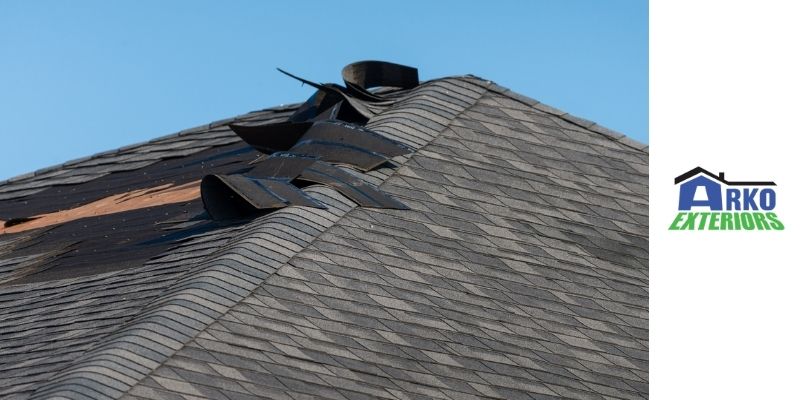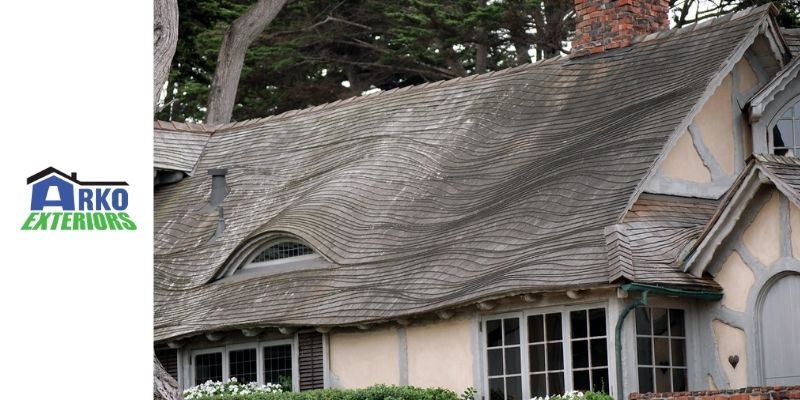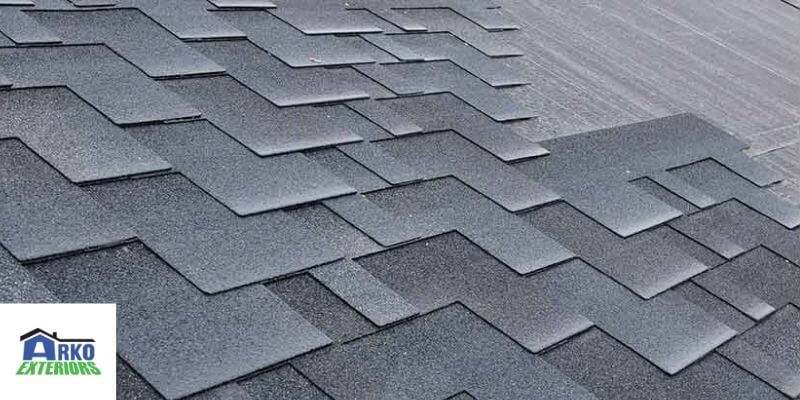Have you ever driven by a house with a sagging roof and worried it might collapse at any minute? Usually, homes with sagging roofs are abandoned and nobody lives there. Other times, though, there are people underneath sagging roofs, and they’re in danger of dying from a roof collapse! If and when a roof is sagging, it’s a very serious matter that should not be ignored. A sagging roof is beyond repair. It needs to be replaced.
Why do roofs sag?
#1 Roof Sagging Is Caused By Excessive Water Leaks And Internal Moisture Damage

Roofs are continuously exposed to harsh climatic conditions such as snow, ice, heavy rainfall, strong winds, stormy weather, and/or hailstones.
Water that falls on the roof can get trapped in the corners and retained under the shingles. If and when water is not properly drained out through the gutters, then this trapped water starts slipping inside the roof underlayment and damages the framework.
Sometimes water gets trapped due to the improper design of the roof and shingles or gutters. The trapped water will initially damage the wooden framework and then cause blisters in the shingles. All these things can and will ultimately lead to the roof sagging.
Besides the issue of water damage, water retention also causes uncontrolled growth of moss/mildew over the surface of the roof. The moss and mildew will cause water to seep inside the attic and inside the house, causing damages to the ceilings and interior walls. This is also a reason for roof sagging.
#2 When There Is Excessive Weight On The Roof
If you are residing in an area or region that is generally prone to heavy snowfall and hailstones, you could have problems. Roofs are generally strong enough to handle the weight of snow… but only to a certain limit. If the weight exceeds the limit, the roof will not have the strength to hold on any longer and then it starts sagging. Besides sagging, hailstones and snow have the potential to cause damage to the shingles, such that the entire heavy load comes on the underlayment, which is unable to support the weight.
#3 The Age Of The Roof

This is another factor that leads to a roof sagging. In its initial years, the roof will require low maintenance because it’s strong and sturdy. But, over the course of time, you will notice that the support system of the roof is becoming weak, and the underlayment roof framework is unable to maintain a proper balance of the topmost layer such that it’s losing strength. Due to this issue, the roof will start sagging and won’t be able to hold the roofing components altogether.
Usually, the average service life of roofs is about 20 to 25 years (if you are keeping them well maintained), and, after this age, it is quite likely that the roof will start showing signs of sagging.
Summary
So what should you do when your roof starts sagging? You need to hire a professional roofing contractor and let them know your concerns. They will get the roof inspected and provide you a detailed report of it and the specific reason(s) behind the roof sagging.
Roof sagging shows that the roof has reached the end of its life, and no repair work would be able to get it back to its original efficiency and strength. In such situations, it is best to get your roof replaced.

